Author: Alex Shanks-Abel
The German style of brewing is marked by a multitude of brewing practices that, while laborious, were arguably developed out of necessity. One such process is the decoction mash, which is a sort of step mash where a portion gets removed, boiled, then reincorporated as a way to raise the temperature to the next step. In addition to improving overall extraction rates, the boiling that occurs during a decoction is purported to produce melanoidin compounds that lend malty, toasty, and bready characteristics to beer.
Given the time and energy required to perform a decoction mash, particularly compared to a common single-infusion mash, many brewers refrain from employing this traditional method. Whereas some view the flavor contribution of decocting as being minimal at best, others rely on a unique ingredient designed to impart beer with the desired characteristics associated with a decoction mash. Developed by Weyermann Malting with this specific purpose in mind, melanoidin malt is marketed as intensifying honey and biscuit notes in styles ranging from Light Lager to Strong Ale.
Munich Helles is one of my favorite styles, and I’ve brewed many successful batches without either a decoction mash or melanoidin malt. However, I’ve had excellent examples of this style made with melanoidin malt that rivaled those made with traditional decoction mashes. Curious to taste the impact of this interesting malt for myself, I designed an xBmt to test it out!
| PURPOSE |
To evaluate the differences between a Munich Helles made with 2.5% melanoidin malt and one made without melanoidin malt.
| METHODS |
With the hope of amplifying the impact of the variable, I went with a simple Munich Helles recipe that I’ve brewed many times over the years. The batch made without melanoidin malt received an equivalent amount more base malt.
Road To Helles
Recipe Details
| Batch Size | Boil Time | IBU | SRM | Est. OG | Est. FG | ABV |
|---|---|---|---|---|---|---|
| 5.5 gal | 60 min | 14.7 | 4.3 SRM | 1.049 | 1.005 | 5.78 % |
| Actuals | 1.049 | 1.005 | 5.78 % | |||
Fermentables
| Name | Amount | % |
|---|---|---|
| Pilsner Malt | 9.25 lbs | 92.5 |
| Munich Malt (Light) | 8 oz | 5 |
| Melanoidin Malt OR additional Pilsner malt | 4 oz | 2.5 |
Hops
| Name | Amount | Time | Use | Form | Alpha % |
|---|---|---|---|---|---|
| Hallertauer Hersbrucker | 30 g | 60 min | First Wort | Pellet | 1.4 |
| Tettnang | 30 g | 60 min | First Wort | Pellet | 2.2 |
Yeast
| Name | Lab | Attenuation | Temperature |
|---|---|---|---|
| Pilgrimage (L26) | Imperial Yeast | 77% | 44.1°F - 55.9°F |
Notes
| Water Profile: Ca 54 | Mg 0 | Na 12 | SO4 51 | Cl 77 |
Download
| Download this recipe's BeerXML file |
After adding identical volumes of RO water to separate BrewZilla units, setting the controllers to heat them up, and adjusting each to my desired profile, I weighed out and milled the grains.
Once the water for each batch was adequately heated, I incorporated the grains then checked to make sure both were at the same target mash temperature.
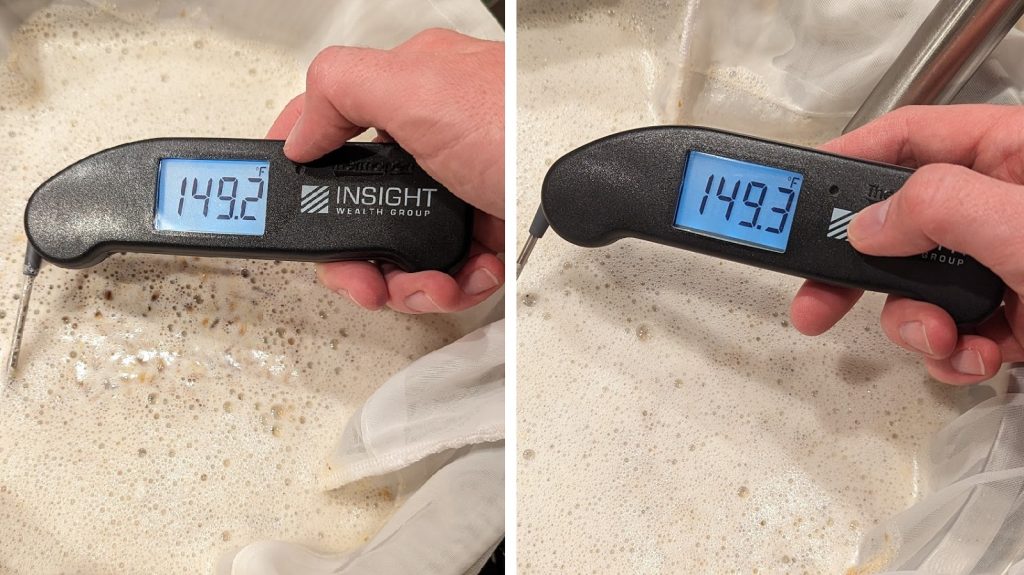
The controllers were set to maintain my target temperature of 149°F/65°C and they were left overnight, amounting to a mash rest of approximately 8 hours.
First thing the following morning, I removed the grains from each batch, sparged to collect the same pre-boil volume, and set the controllers to heat the wort up before preparing the kettle hop additions.
The worts were then boiled for 60 minutes before being chilled and transferred to fermentation kegs.
Refractometer readings showed a minor difference in OG between the worts.
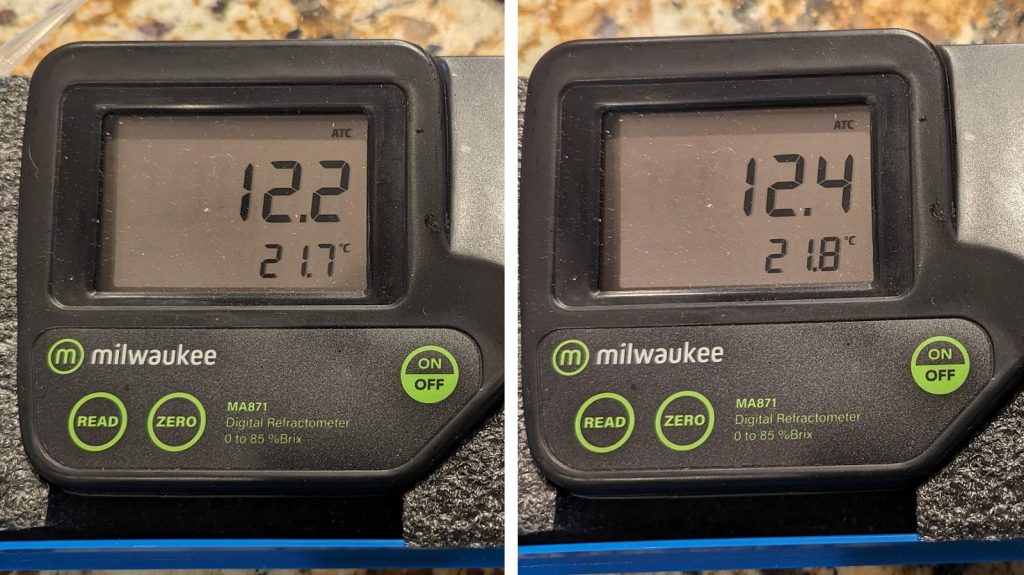
The filled fermenters were placed in my chamber and left to finish chilling to my desired fermentation temperature of 55°F/13°C for a few hours before I pitched a pouch of Imperial Yeast L26 Pilgrimage into each.
With no signs of activity after 3 weeks, I took hydrometer measurements showing a slight difference in FG.
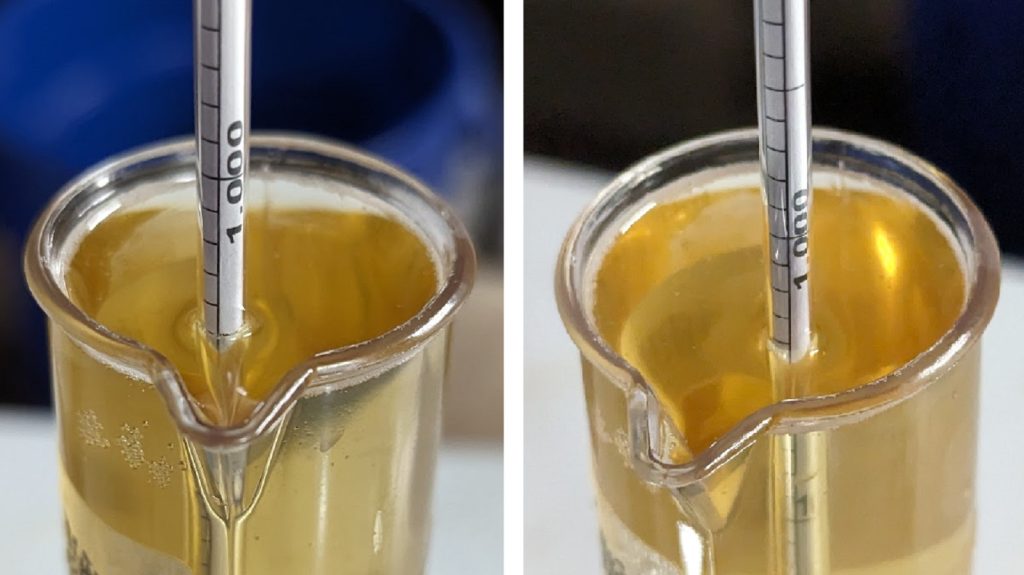
At this point, I cold crashed the beers overnight then pressure-transferred them to sanitized serving kegs that were placed in my keezer and left on gas for 3 weeks before they were ready for evaluation.
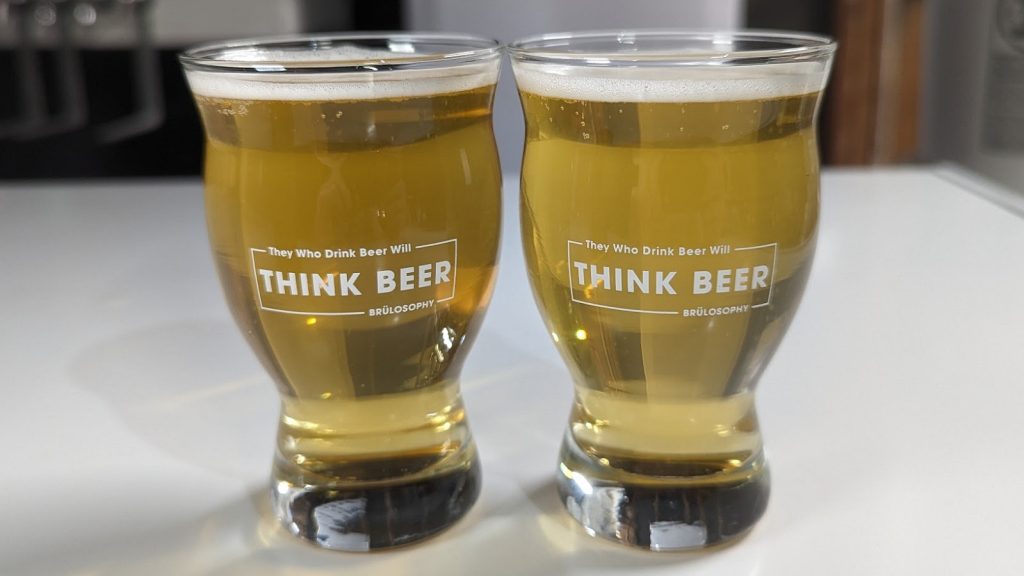
| RESULTS |
A total of 20 people of varying levels of experience participated in this xBmt. Each participant was served 2 samples of the beer made with melanoidin malt and 1 sample of the beer made without melanoidin malt in different colored opaque cups then asked to identify the unique sample. While 11 tasters (p<0.05) would have had to accurately identify the unique sample in order to reach statistical significance, only 7 did (p=0.52), indicating participants in this xBmt were unable to reliably distinguish a Munich Helles made with 2.5% melanoidin malt from one made without melanoidin malt.
My Impressions: Out of the 5 semi-blind triangle tests I attempted, I correctly identified the odd-beer-out just twice. To my palate, these beers were identical in every perceptible way, possessing pleasant malt flavor balanced by a nice noble hop character that made it crisp and crushable.
| DISCUSSION |
Formed during the late stages of the Maillard reaction through the interaction of carbohydrates and amino acids, melanoidins are reddish-brown flavor compounds that are commonly described as tasting bready, toasty, and toffee-like. In brewing, it’s widely believed that melanoidins are formed during a decoction mash, which many brewers avoid due its generally convoluted nature. As an alternative, melanoidin malt can purportedly be used to mimic the desirable characteristics of a decoction mash. Interestingly, tasters in this xBmt were unable to reliably distinguish a Munich Helles made with a standard portion of melanoidin malt from one made without melanoidin malt.
One possible explanation for this result is that the 2.5% melanoidin malt used in this xBmt simply wasn’t enough to have a perceptible impact, which would be curious considering the recommended usage rate of 1 – 5%. It’s also possible that the impact of the melanoidin malt would have become more apparent if the beers were given more time before evaluation, though 3 weeks in the fermenter and another 3 weeks of cold conditioning is pretty long.
Historically, I’ve kept some melanoidin malt on-hand to use as a secret sauce by sprinkling a little into the mash when making German-style beers, especially lagers. Given the results of this xBmt as well as my own experience with these beers, I don’t see myself ordering anymore melanoidin malt once my current stash is used up. That said, I am curious to see what impact, if any, this specialty malt has when used in larger amounts.
If you have any thoughts about this xBmt, please do not hesitate to share in the comments section below!
Support Brülosophy In Style!
All designs are available in various colors and sizes on Amazon!
Follow Brülosophy on:
FACEBOOK | TWITTER | INSTAGRAM
If you enjoy this stuff and feel compelled to support Brulosophy.com, please check out the Support page for details on how you can very easily do so. Thanks!


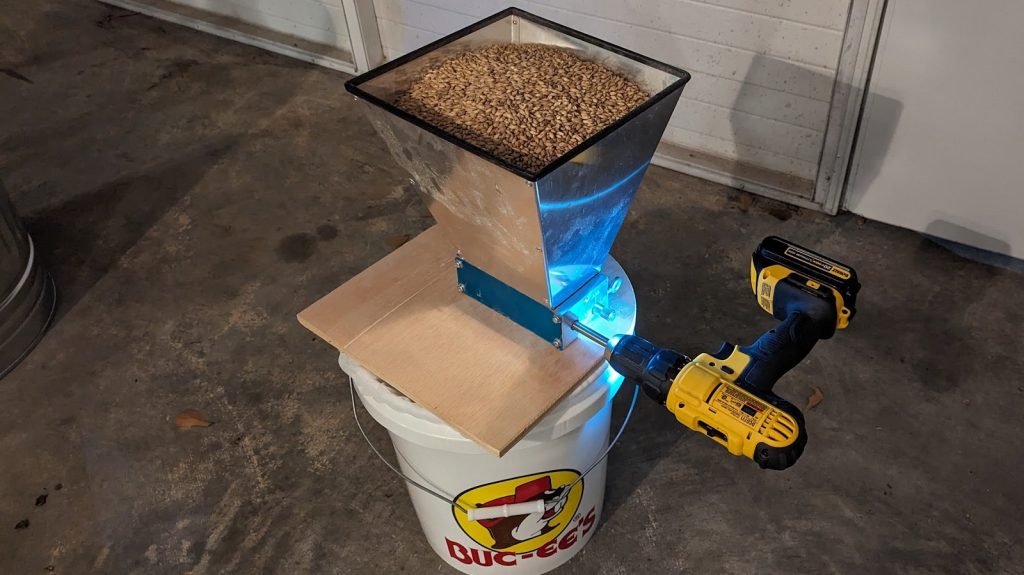
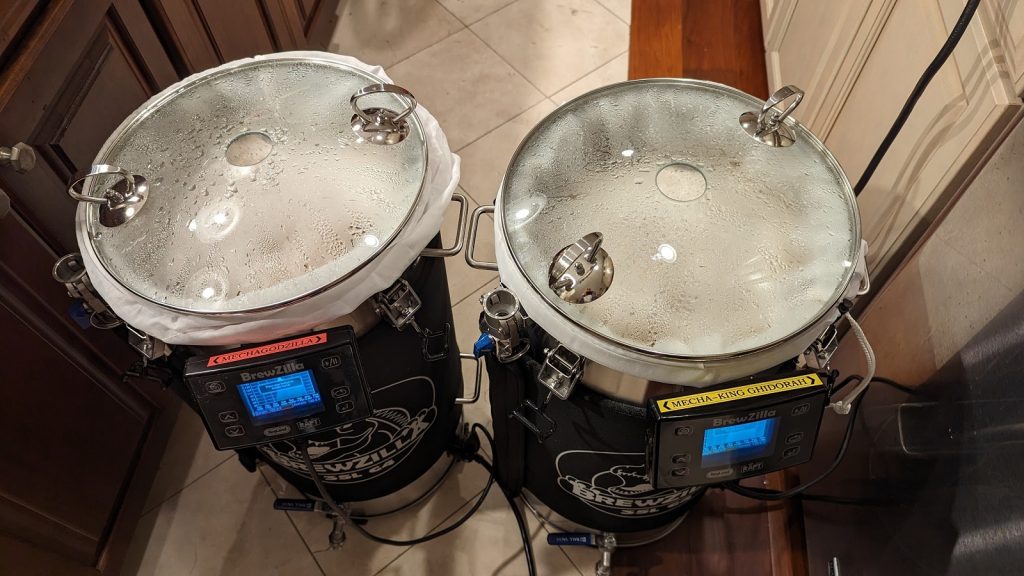
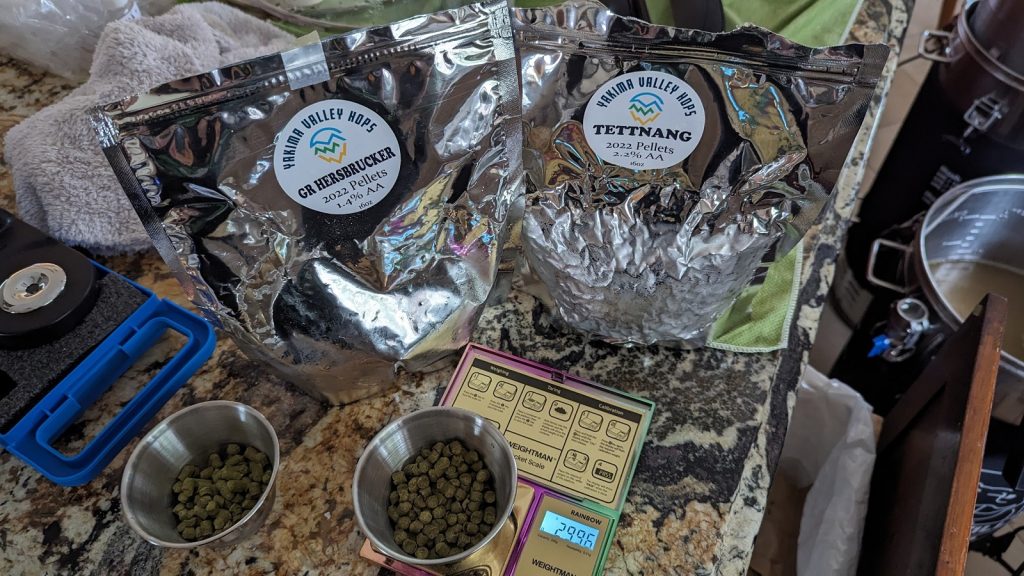
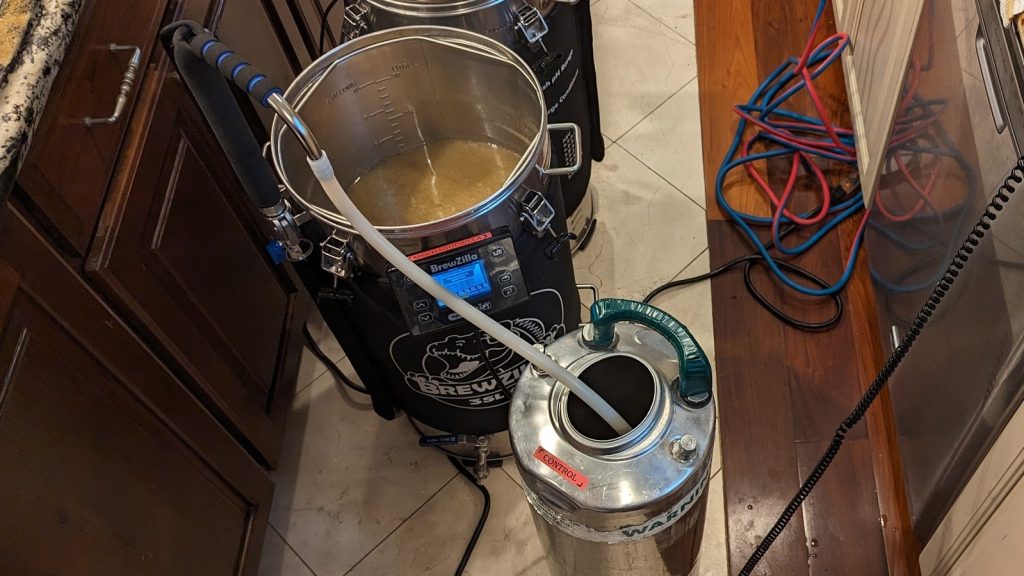
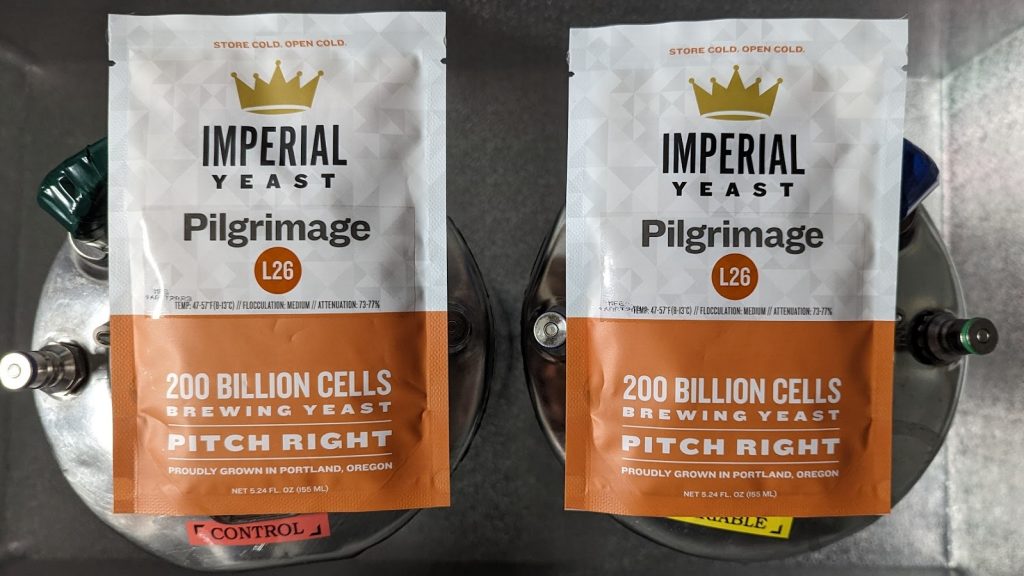











6 thoughts on “exBEERiment | Impact Melanoidin Malt Has On A Munich Helles”
Interesting… only wish you had gone with a full 5% addition to determine perceptibility, then one could throttle back or add more to suit ones taste.
Thanks for the experiement. I use 8oz of melanoidin in a similar recipe. I have been considering not using it on the next batch as I think that it imparts a little to much malt flavor, but I have not done a side-by-side.
I, too, use 8oz in a similar recipe. I did not use it in my last batch, and I am going back to using it. The beer tasted a bit too “thin” for me without it. I was considering going down to 4oz. until I read this article. I will continue with 8oz now.
Interesting, but not shoking to me. To my process, after I discovered the REVERSE DECOCTION method, I don`t think that`s necessary any other type of substitute for de traditional decoction.
This is a great exbeeriment idea, hoping it’s done again with a higher % of melanoidin malt.
I’m a big fan of a 100% Pils malt Helles and have yet to make one with a melanoidin component. Great ideas here, keep it coming 👌🏻
Added 1.5% to my helles today. I could have added more but wanted to keep it ‘in style’. I’ll either take it out or try more next time and see my preference. Good experiment.